"It was truly a delight to discover the 'Secret Life of the Arboretum' yesterday. This treasure is invaluable for every citizen of Belgrade, as it allows a glimpse into the soul of this wonderful forest community. We really managed to escape the city, feel the peace, and experience the charms of nature and the forest”. Slavica Ivanović, a retired chemist, shares her experience from her visit to a theatre performance in Arboretum one of the three urban oases created in the Serbian capital. Based on her own experience as a manager of the Center for Accommodation and Day Care for Children and Youth with Developmental Disabilities in Julino Brdo (Urban Oasis 2) Nada Rackov states that "I don’t remember a time since 2008 when the employees have been so engaged and enthusiastic about any voluntary activity".
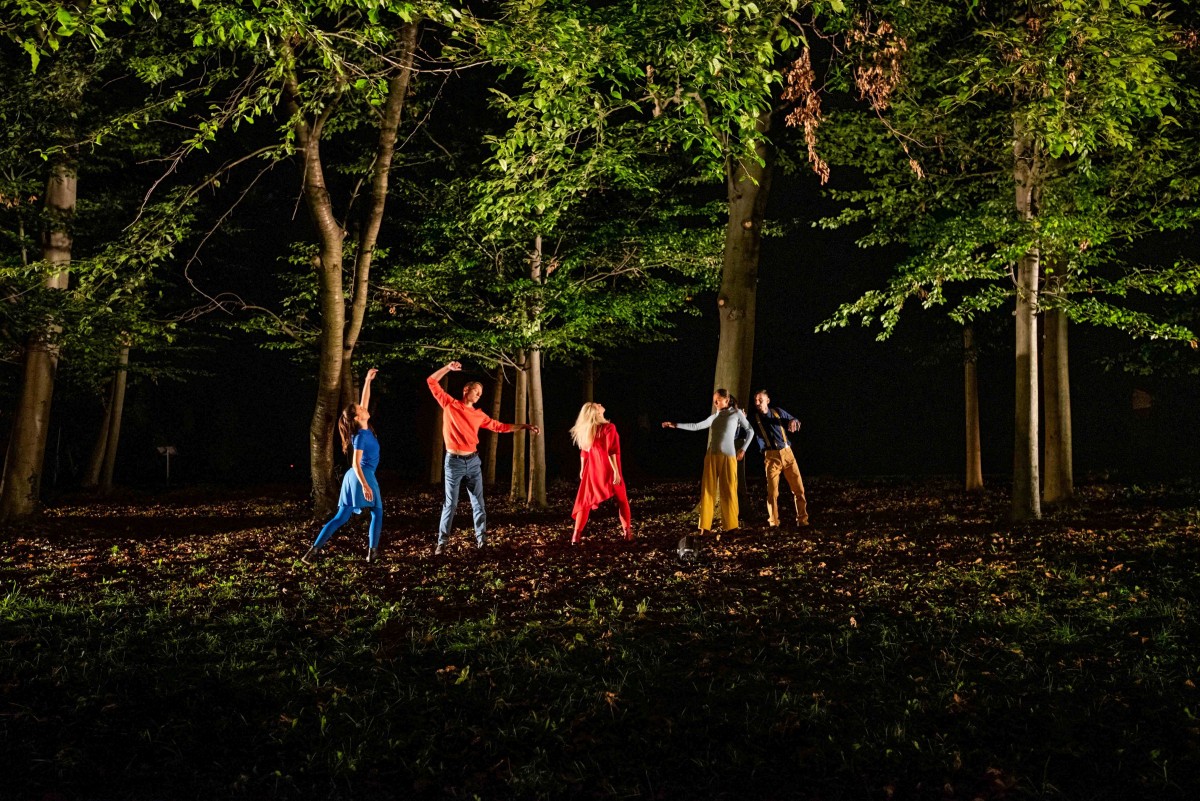
Belgrade Urban Oases project focuses on renewing and revitalizing neglected urban spaces through inclusion, art, and an ecological approach. The project spans three carefully selected locations, where all involved actors, including local residents, actively participate in shaping the outcome. As Zorica Milisavljevic, the project manager explains, “Belgrade Urban Oases was conceived as a collaborative initiative from the very beginning, with the local community playing a central role in its development and success. Once the construction work was completed and the oases visually transformed, our focus shifted to encouraging the local community to embrace these spaces as their own”. For this purpose the stakeholders organized a variety of cultural programs, including concerts, theater performances, workshops, and neighborhood gatherings, to motivate community involvement and interaction with the new spaces. “The response was overwhelmingly positive, particularly from those who had been involved from the beginning. These early participants took on the role of multipliers, helping to attract new members to the oases” Milisavljevic says.
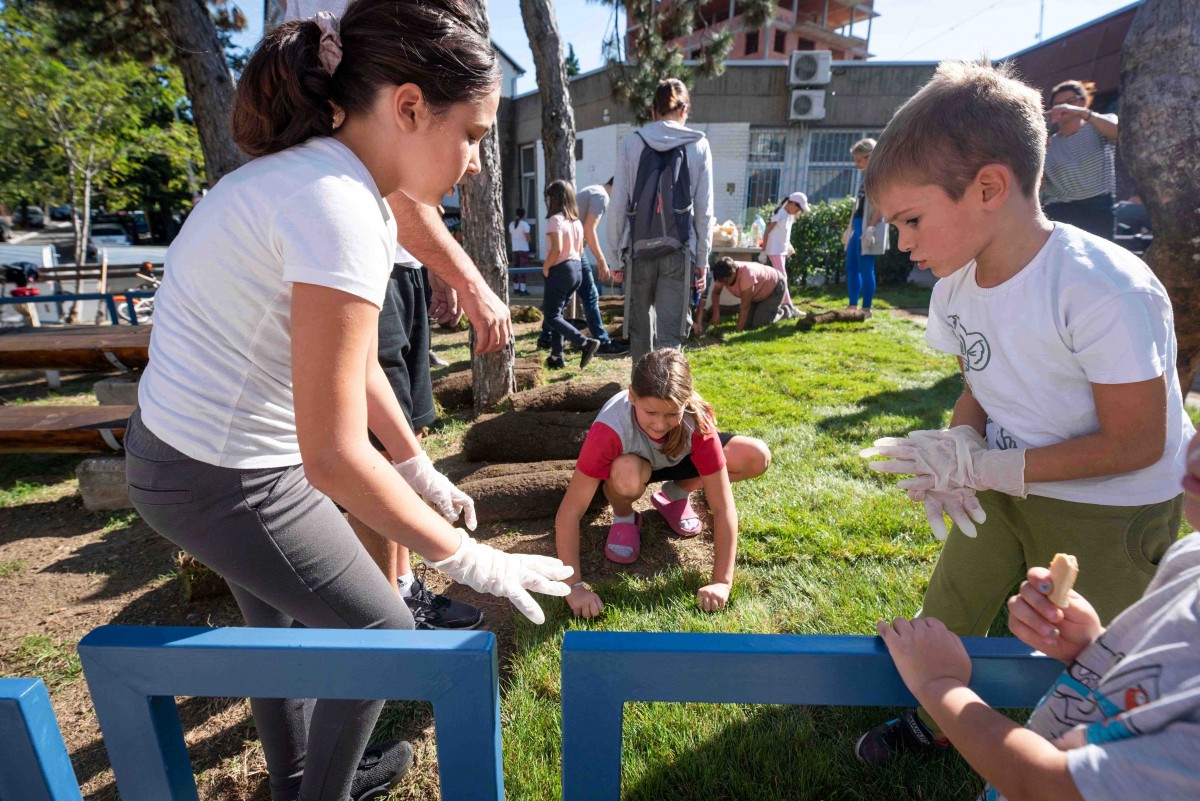
To foster participation and a sense of ownership, several mechanisms were put in place. Workshops, picnics, and informal meetings brought together students, beneficiaries from both Centers, local and international experts, and residents. These gatherings allowed for the exchange of ideas, discussions about project progress, and the development of connections. Early in the project, students from the Faculty of Forestry conducted surveys to assess the local community's needs and preferences, which greatly influenced the design and direction of the Oases. These surveys led to numerous interactions, including tea parties, picnics, and hands-on activities that improved the Oasis spaces.
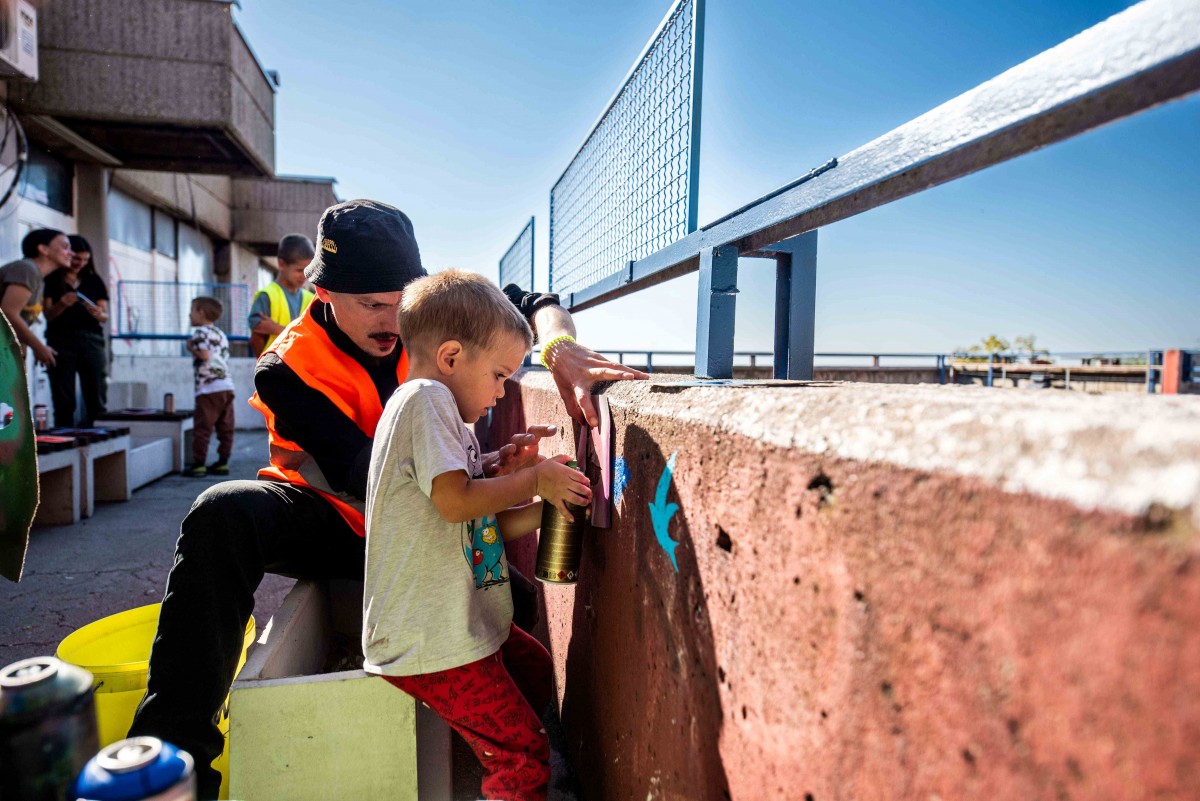
The project was inspired by the German artist and architect Martin Kaltwasser, known for his critiques of consumerism through participatory, site-specific interventions in public spaces, and the first map of urban heat islands in Belgrade, created by Dr. Ivan Simić from the Faculty of Architecture at the University of Belgrade. This map highlighted "shade oases"—green areas where temperatures are up to 6 degrees lower than the surrounding urbanized areas.
As Belgrade, like many growing cities, faces challenges such as pollution, noise, traffic congestion, and urban gentrification, the Goethe-Institut proposed this project, which was embraced by nine members of the European Union National Institutes for Culture (EUNIC) network in Serbia. Urban Oases involved cooperation with local institutions, universities like the Faculty of Architecture and the Faculty of Forestry, Belgrade International Architecture Week (BINA), and organisations supporting young people and people with developmental disabilities.
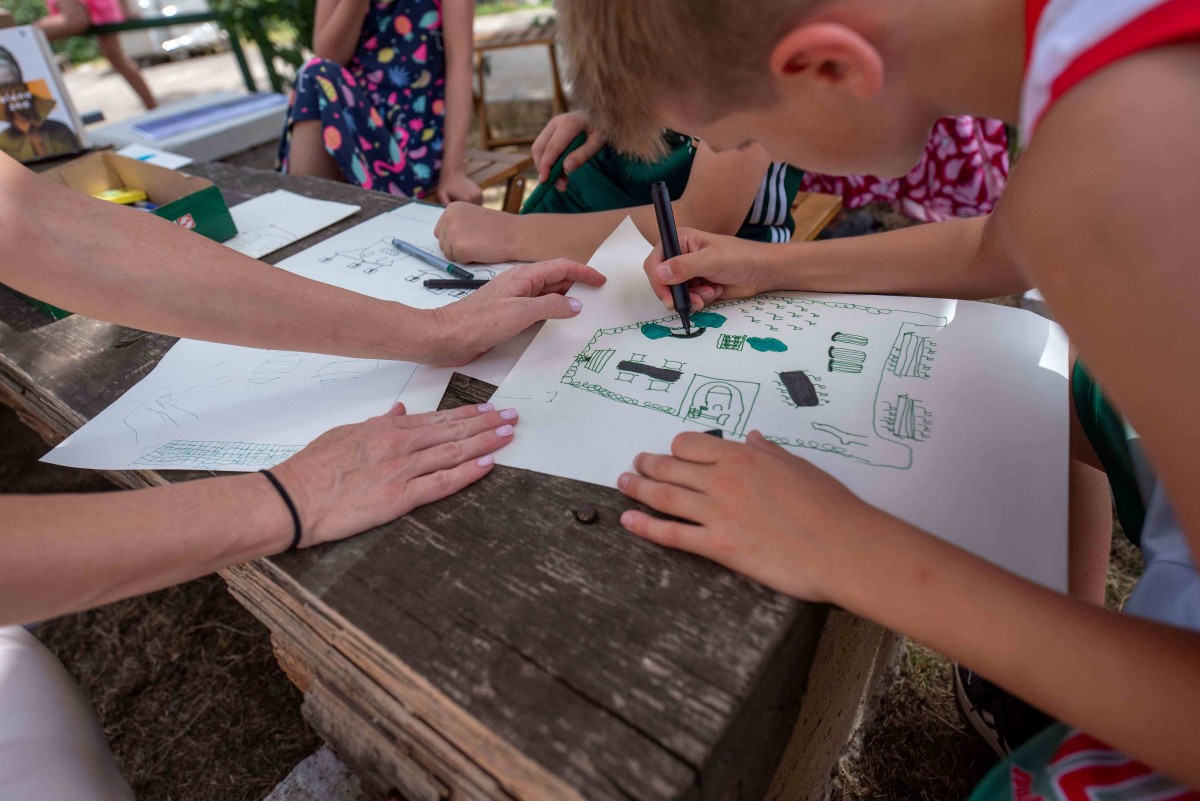
The project addresses three distinct locations in Belgrade, each with its own unique challenges and opportunities for revitalization. The locations were chosen not only for their revitalisation potential but also for the critical questions they posed about urban oases: What is an urban oasis? What communal processes are necessary to make it inclusive? How can it positively impact city life? Through diverse community involvement, the project explored multiple ways of creating sustainable spaces that benefit both local residents and the wider city.
Urban Oasis 1: Center for the Integration of Youth, Zvezdara
This oasis aimed to transform a neglected public space surrounding Center for the Integration of Youth (CIM) into a vibrant, multifunctional area for children and the local community. In collaboration with students from the Faculty of Architecture at the University of Belgrade, CIM’s children contributed to the design process. During Belgrade International Architecture Week (BINA) in June 2024, the children and the public voted on their favorite designs. The chosen concepts, many of which were co-created with the children, were implemented later in the year. The project aims to improve social interactions, safety, and the aesthetic qualities of the environment. Year-round workshops and artistic interventions educate both children and the wider community on sustainable practices, fostering a dynamic and inclusive space.
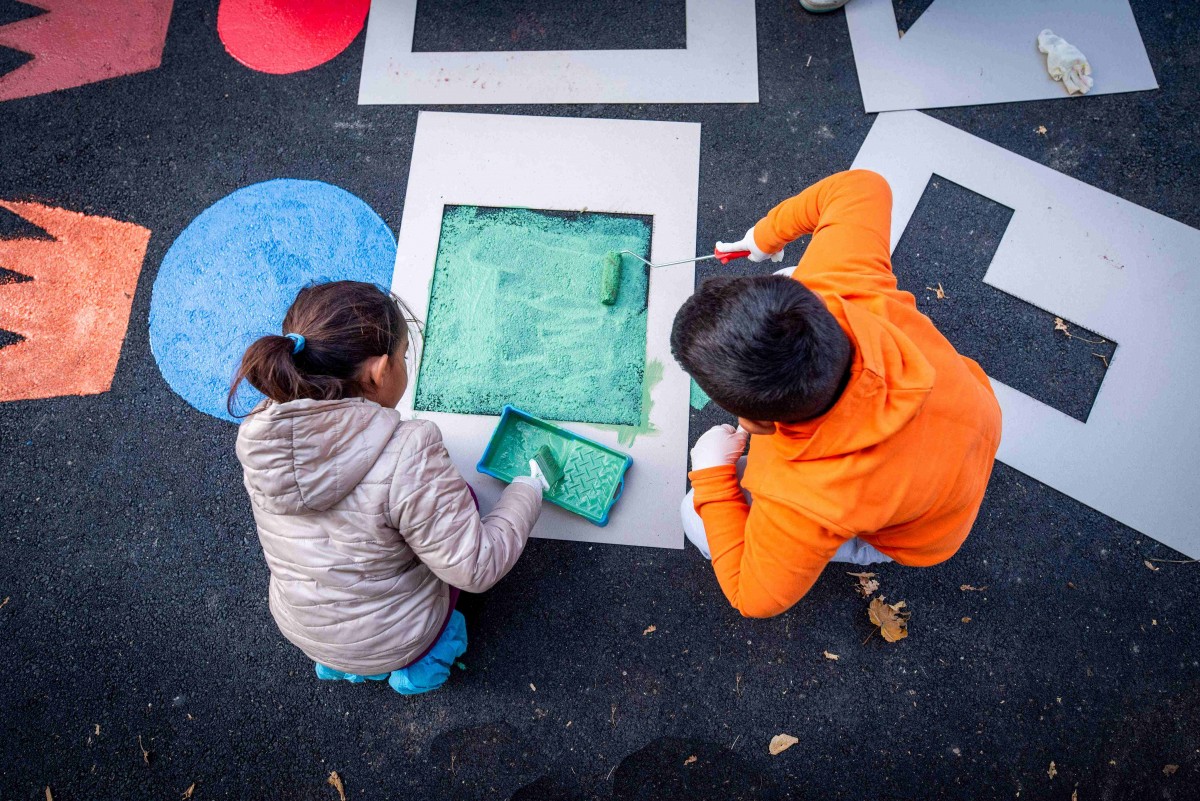
"We focused on one of the locations - the Center for the Integration of Youth and an open space within the premises of the building," says Jelena Ivanovic Vojvodic, co-founder and co-organiser of the Belgrade International Week of Architecture (BINA). A group of undergraduate students from the Faculty of Architecture, University of Belgrade, worked on the project of designing the available space with the idea that it should be adapted to the specific needs of the users and serve as a new hub of social inclusion, security, neighbourhood connection, ecological and aesthetic improvement and promotion. "In working with the students, the first step was to study positive examples, i.e. the experiences/challenges that such projects bring with them," explains Vojvodic. In collaboration with the Italian Cultural Institute, a public lecture was given by Dr Valentina Tal, a researcher at the Department of Architecture, Design and Urbanism at the University of Sassari.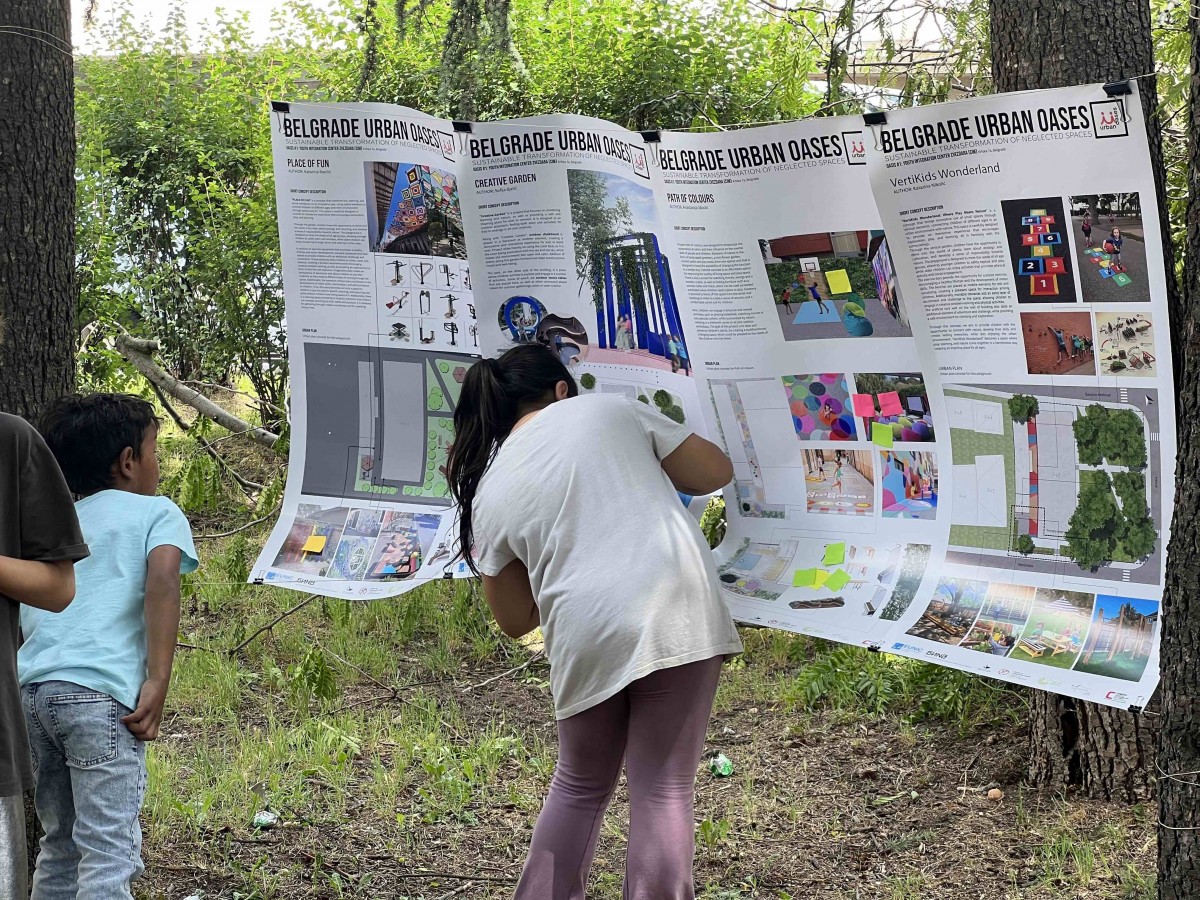 During the lecture, the students had an insight into the implementation of projects related to the community and specific groups of residents. The next step was a participatory workshop to identify the real needs of the users. The basic needs of the children were identified, as well as the limitations of the space itself.
During the lecture, the students had an insight into the implementation of projects related to the community and specific groups of residents. The next step was a participatory workshop to identify the real needs of the users. The basic needs of the children were identified, as well as the limitations of the space itself.
The first public presentation of 23 student solutions was organised in the park in front of the Shelter. All the urban oases were presented as part of the 19th Belgrade International Architecture Week. After the voting process, the solutions were selected and their authors formed a team that worked during the summer to finalise the project, which included the reconstruction of the pedestrian path and its colouring with symbolic artistic elements. In the space, a wooden floor covering, a wooden bench, a wooden fence, a video bim and a white projection wall, a trampoline and chairs were installed. Four trees were also planted, as well as many small plants in a large flower pot and in the small hanging pots on the wooden fence.
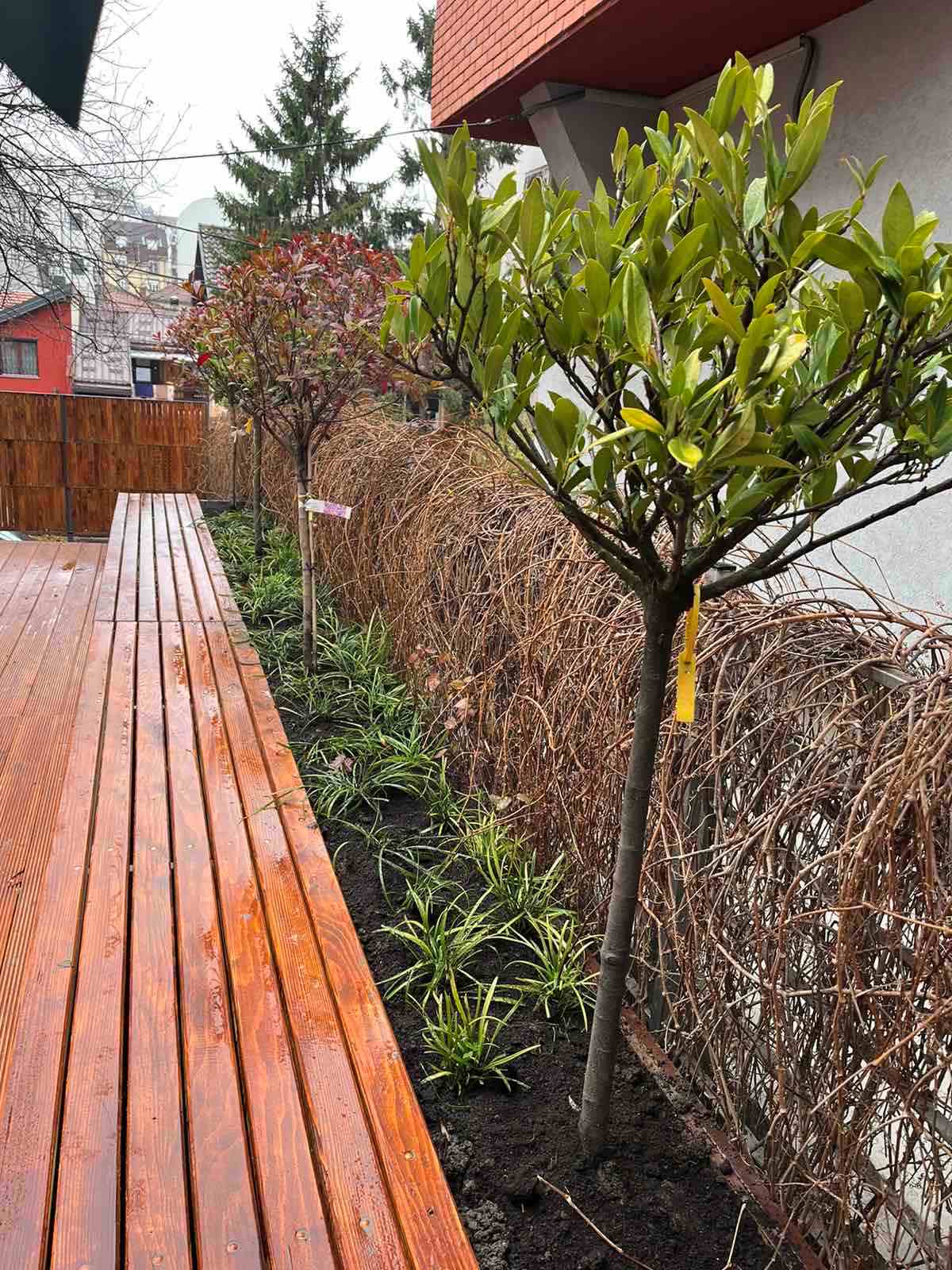 Urban Oasis 2: Center for the Accommodation and Day Care of Children and Youth with Developmental Disabilities "Čukarica," Julino Brdo
Urban Oasis 2: Center for the Accommodation and Day Care of Children and Youth with Developmental Disabilities "Čukarica," Julino Brdo
Located near the "Čukarica" center, this oasis transformed a neglected public space into a communal area designed by students from the Faculty of Forestry’s landscape architecture and horticulture programs. Featuring green spaces, seating areas, and plantings, the project turned concrete platforms into inviting spaces. With a boat-inspired design, the space encourages social activities and collaboration. The addition of urban gardens and enriched vegetation now makes this area a hub for community gatherings, enhancing both the social and ecological environment.
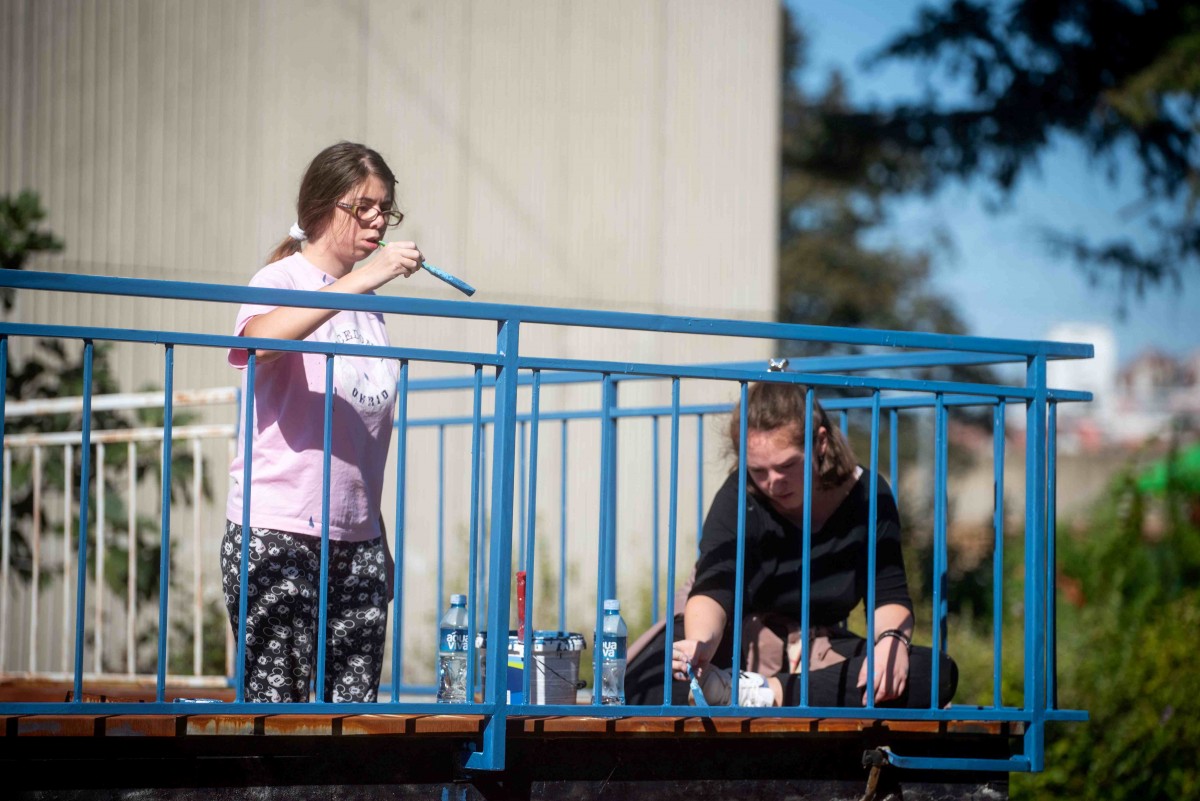
"In Julino brdo, we started the project by collecting information from the neighbours through a questionnaire to find out what they thought of the existing local green spaces and what their ideas were for improvement and future design," says Milena Putnik, an artist and Assistant Professor at the Department of Landscape Architecture and Horticulture at the Faculty of Forestry, University of Belgrade. Together with the professors of landscape architecture Dragana Ćorović and Dragana Skočajić and the professor of design and technology of wood Jelena Matić, from the same university, at the invitation of the Goethe Institute, they were involved in the Julino Brdo Oasis and Arboretum. People from the neighbourhood and the Daycare center helped them spread the word and organise open talks and neighbourhood meetings.

"We contributed to the project in two ways," explains Milena Putnik. "One was practical, such as improving the existing space, adding some new features and creating a new place. To do this, we organised the students into working teams and guided them through the process of designing and making," she adds. "The other aspect of sharing knowledge was very important for us as university teachers, so in collaboration with EUNIC we organised four public guest lectures by experts on topics such as redesigning neglected spaces, designing spaces for people with disabilities, the possibilities of growing flower meadows in urban ecosystems, the importance and protection of solitary bees. All the lectures were open to the public and well attended, both live and via streaming," continues Milena Putnik.
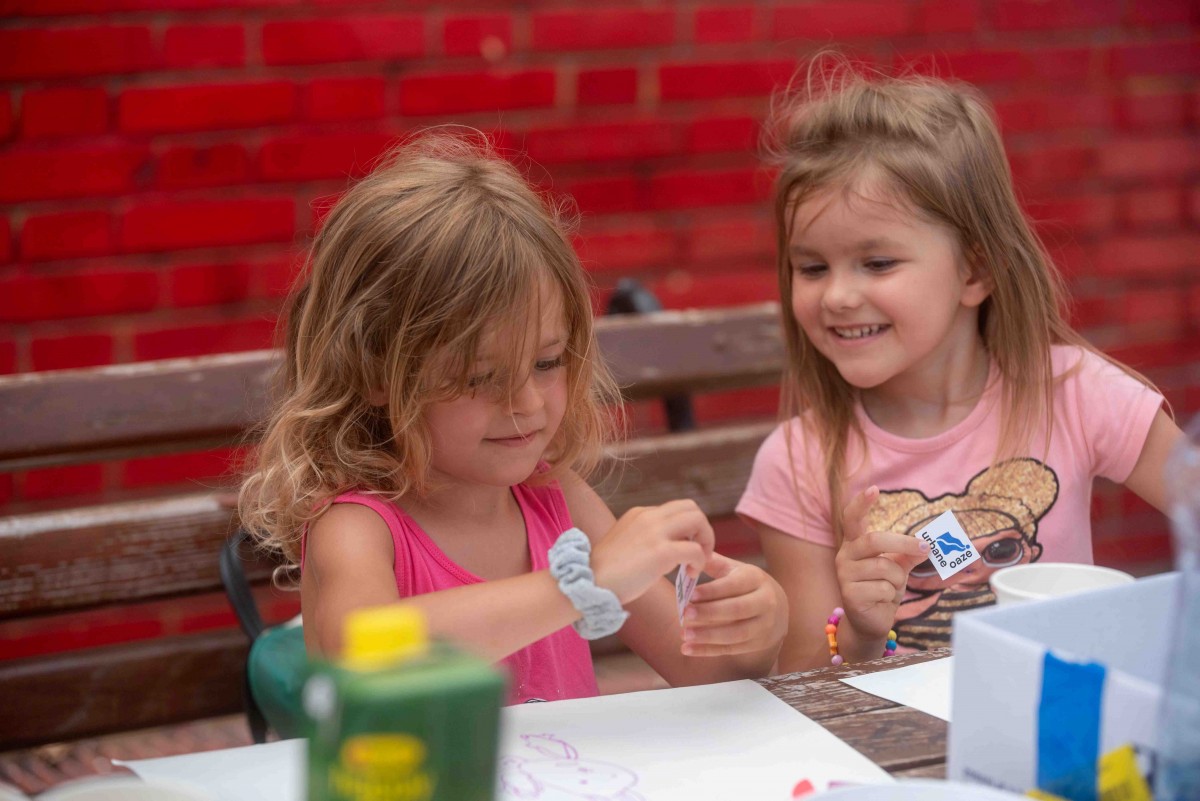
"We were very happy to see that many people came to help during a three-day open workshop in September. It was a sign that they recognise this space as their own and that they will be willing to maintain it," adds the artist. Also an open-air classical concert was held in Julino Brdo as a magnet to bring people together.
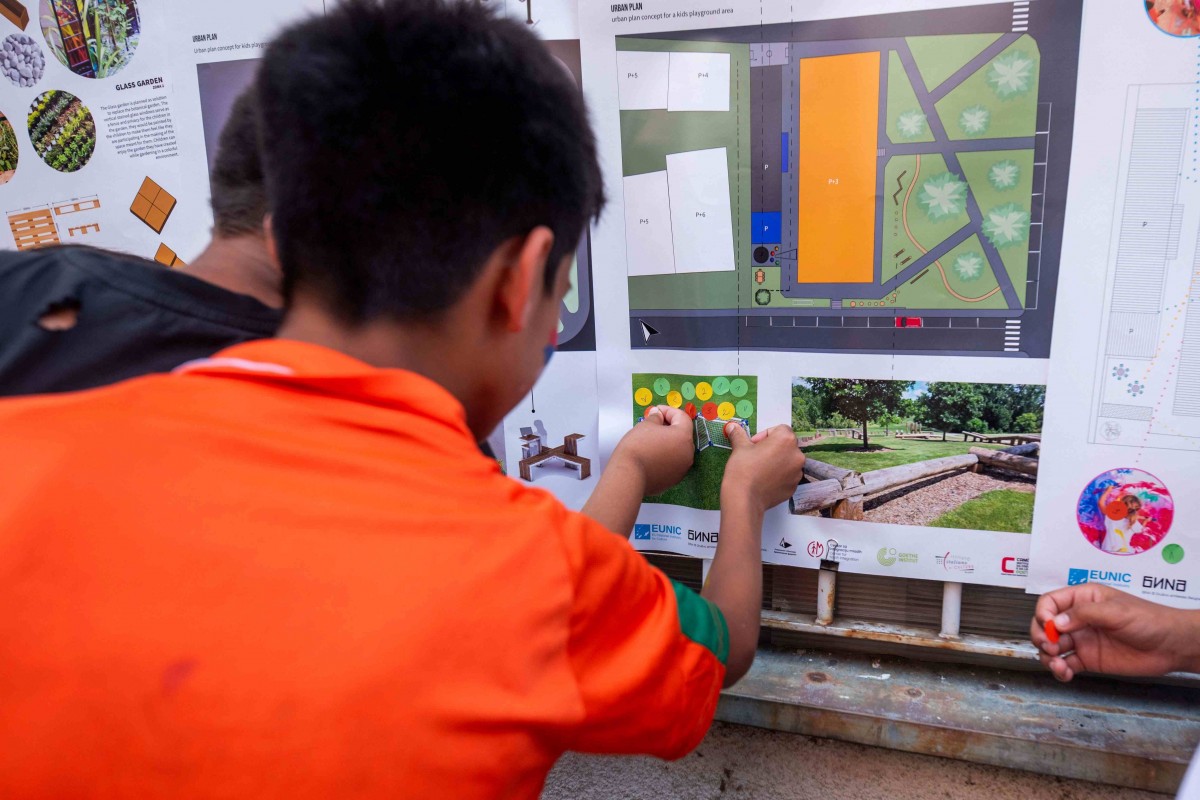
The Daycare center is situated in a residential area of Julino brdo, built 1967-1971, that represents valuable modernist architectural and urban heritage of Belgrade. “It was our aim to bring together users of Daycare center, neighbors and small local bussineses like the pharmacy and the book publishers by creating a cozy communal green space, that would also preserve and complement neglected urban qualities of area” says Milena Putnik.
Urban Oasis 3: Arboretum of the Faculty of Forestry, Banovo Brdo
This Oasis is located within the already existing green space, Arboretum of the Faculty of Forestry, protected area and a home to numerous autochthonous and exotic species of trees, with a nursery, a greenhouse and a Healing Garden. “It is an ideal place for walking and learning about nature, but sligtly out of focus of general public” says Milena Putnik. “Here it was needed to bring visitors to Arboretum, and create a place for gatherings and events” the artist complements.

After the intervention this oasis provides now a peaceful educational retreat. Designed by master’s students from the Faculty of Forestry, it features a summer classroom, an amphitheater, and thematic trails such as the "Honey Trail" and the "Bird Trail." Using natural and recycled materials, students built a mobile café, bee hotel, and small animal houses, blending art and ecology. The wooden amphitheater has become a central gathering point for the local community, hosting ecology lectures, concerts, and participatory events that attract visitors of all ages, fostering a deeper connection with nature.
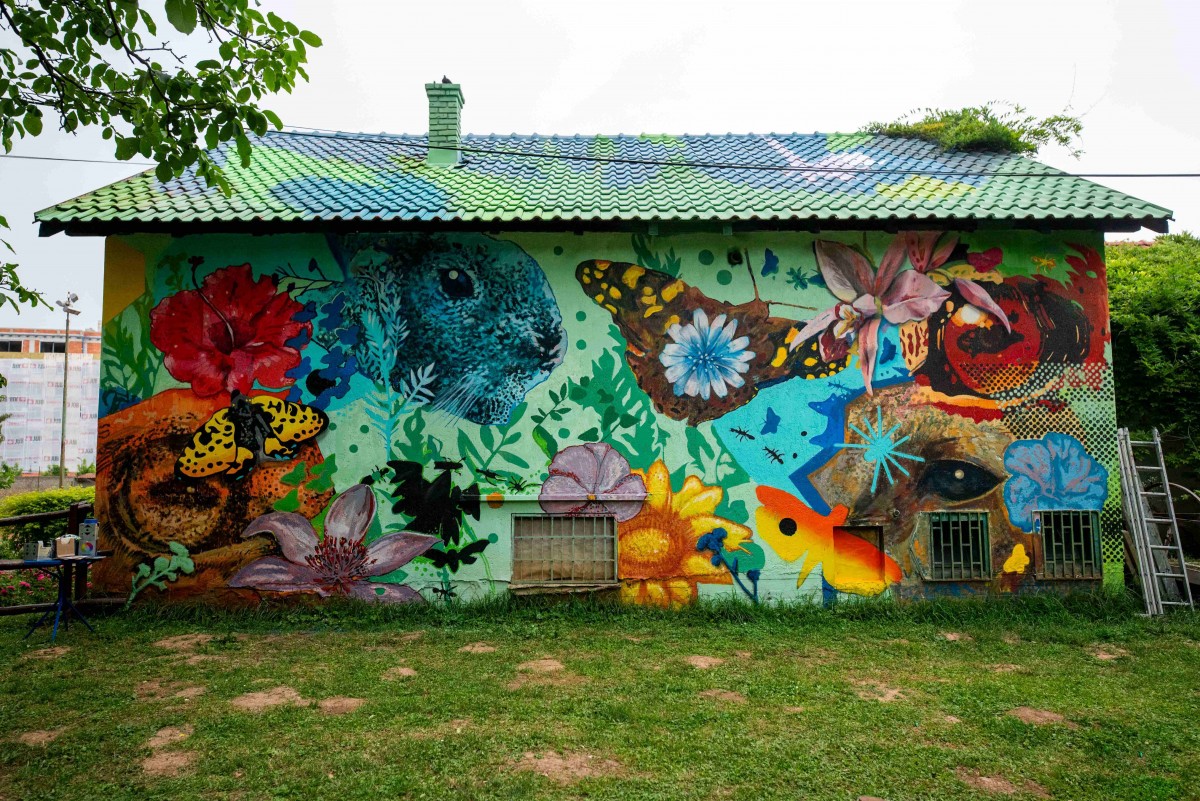
“In Arboretum we created a small open air amphitheatre in nature. There are thematic paths leading there: bee path, bird path and squirrel path, that host small wooden objects - insect hotels, bird houses and nut storages that would improve visitors contact with species living in arboretum” explains Milena Putnik. All of these interventions are based on mentored student projects. Students also collaborated with guest artists in painting the murals on both sites. “The highlight in Arboretum was a to host theatre performances that actively used and refered to the location. Many new visitors came to Arboretum for the first time because of these performances” the artist concludes.
From her own perspective, Zorica Milisavljevic, Project Manager of Belgrade Urban Oases, EUNIC Serbia, summarises that “each Urban Oasis promotes collaboration, creativity, and sustainability, aiming to improve the quality of life and strengthen community bonds in Belgrade.
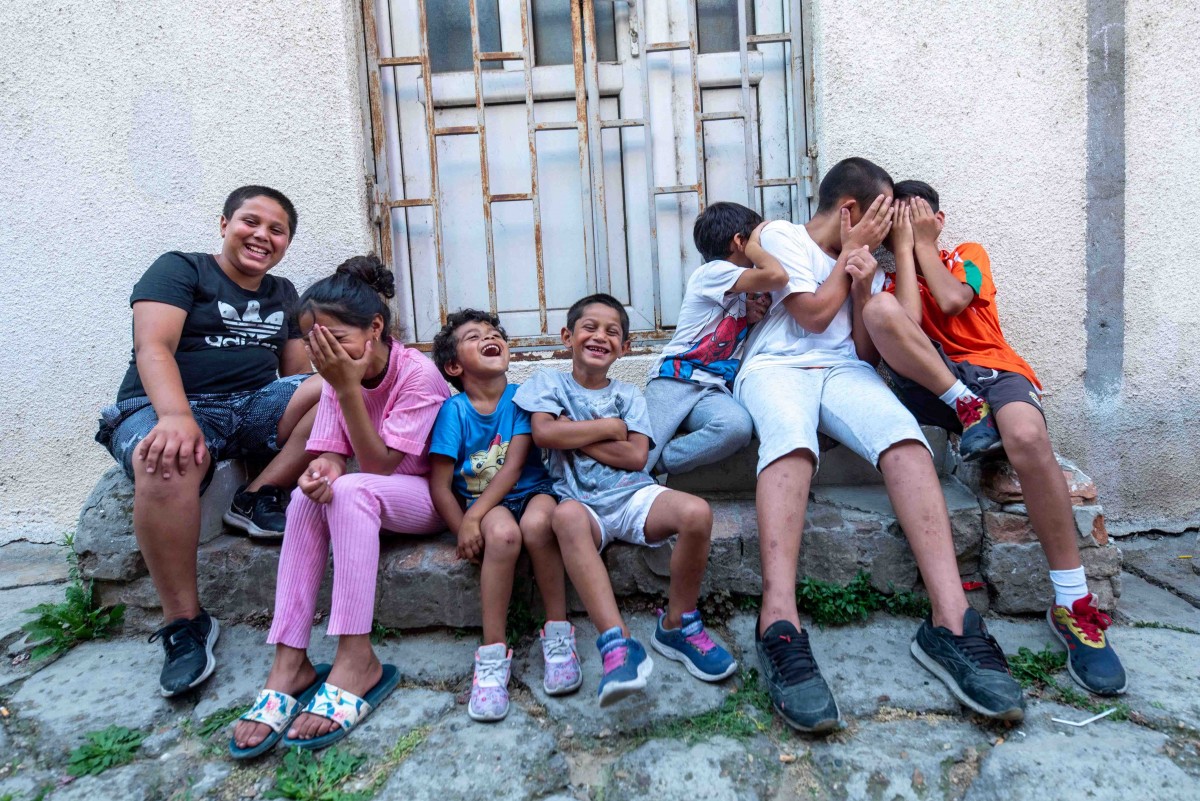
The ultimate goal of the project as described by all three of our interlocutors is for the local community to "adopt" their Urban Oases, nurturing, modifying, and transforming them in response to the evolving needs of the neighborhood. “This approach is key to ensuring the sustainability of the oases and inspiring the creation of similar spaces throughout the city” says Zorica Milisavljevic. To further support this vision, the Goethe-Institut has decided to continue the project next year, offering a cultural program at all three locations in consultation with the local community. “This ongoing engagement will promote the idea of the oases, encouraging even greater participation and fostering a sense of ownership within the community” Milisavljevic concludes.
The Urban Oases alliance
The overall project coordination was carried out by the Goethe-Institut but the Belgrade Urban Oases project was a collective effort involving ten members of the EUNIC network in Serbia, including the Goethe-Institut, the Polish Institute, the Embassy of Sweden, the Austrian Cultural Forum, the Italian Institute for Culture, the Embassy of Portugal, the French Institute, the Czech Center, Collegium Hungaricum, and the Embassy of Slovenia. Local partners played also an equally important role, including the Belgrade International Architecture Week (BINA) and the Faculty of Forestry and the Faculty of Architecture at the University of Belgrade, which provided location proposals and academic input. Students were also pivotal to the design and implementation of the Urban Oases. Key participants included the beneficiaries of the Center for the Integration of Youth (CIM) in Zvezdara and the Center for the Accommodation and Day Care of Children and Youth with Developmental Disabilities "Čukarica" in Julino Brdo. The involvement of international experts also enriched the project. For example, Claudia Salviani from Lebenshilfe Austria visited the "Čukarica" center in April, giving a lecture on spatial design for people with developmental disabilities. In March, Valentina Talu, a researcher and expert in urban development, hosted an online conference on "Tactical Urbanism and the City for Children," focusing on improving life for disadvantaged groups. Architects from KÉK (Hungarian Contemporary Architecture Centre) in Budapest contributed expertise through workshops and exhibitions.
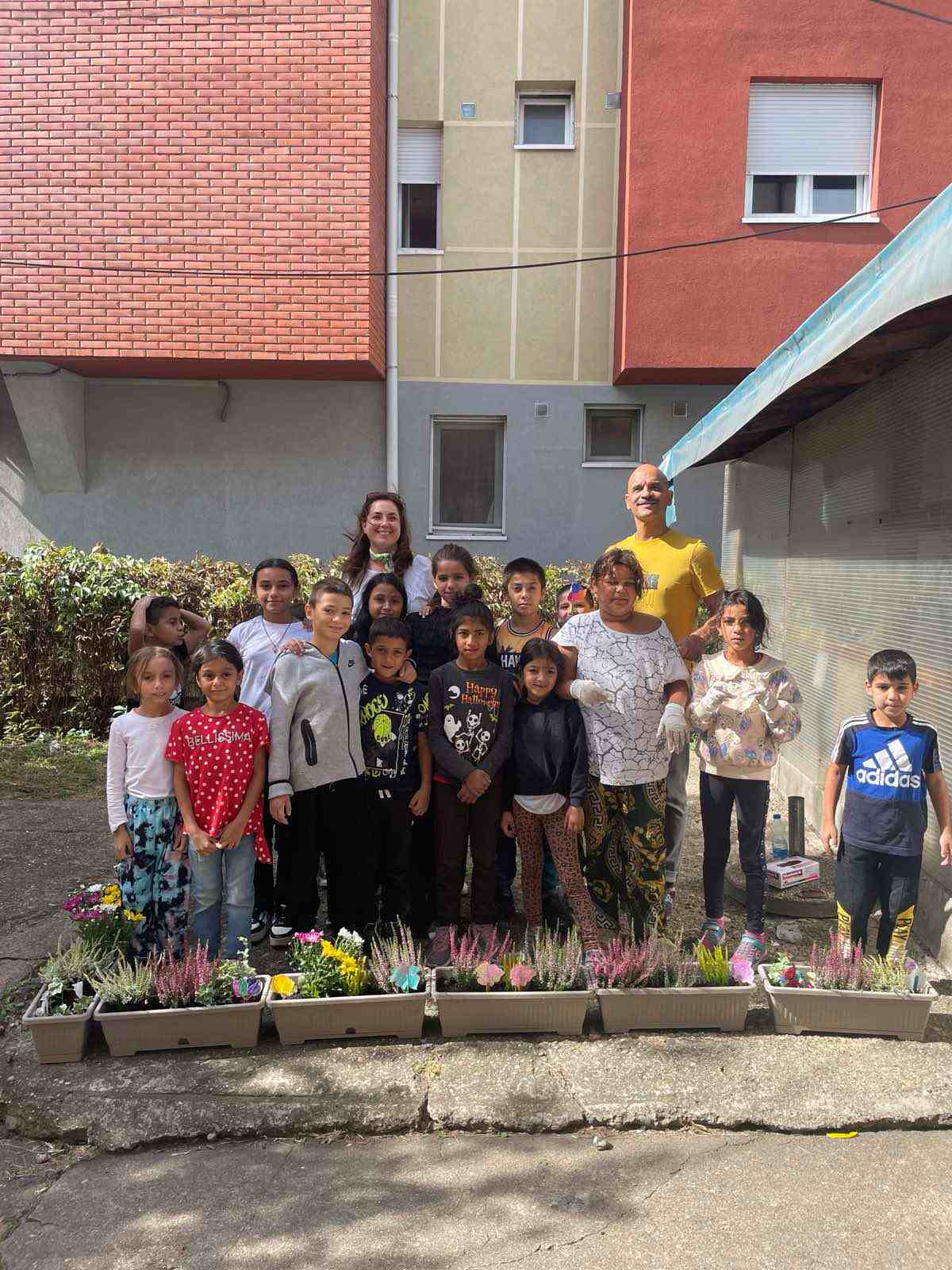
The project also marked World Bee Day on May 20 at the Arboretum, with the opening of the first bee hotel, created in collaboration with the Embassy of Slovenia. Additionally, a flower meadow along the bee trail, initiated by Polish scientist Karolina Petrović, was planted to promote biodiversity and pollinator conservation. Petrović also lectured at the Faculty of Forestry on the importance of flower meadows in urban ecosystems.
--
Photo credits: Aleksandar Gazibara, Aleksandar Gruicic, Belana Dietz, Nata Korenovskaia, Jelena Ivanovic Vojvodic, Zorica Milisavljević
Photo copyright: EUNIC Serbia, Jelena Ivanovic Vojvodic.








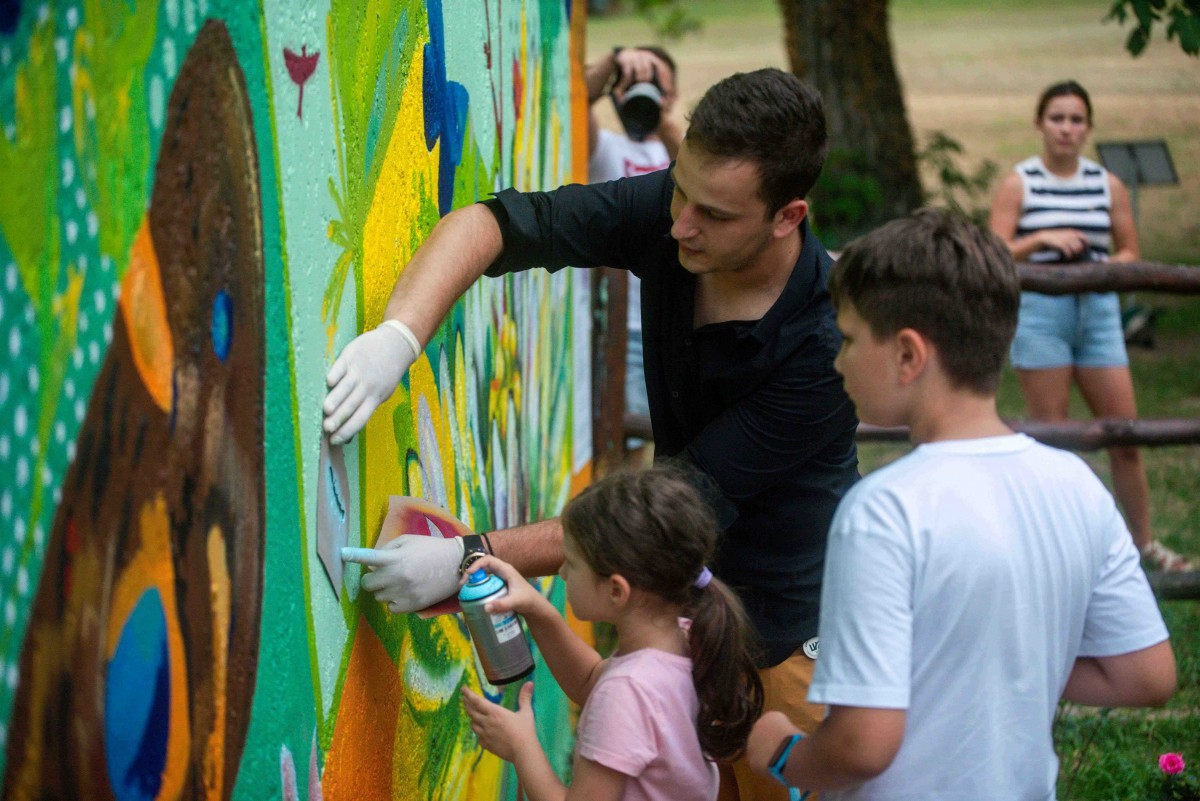





 During the lecture, the students had an insight into the implementation of projects related to the community and specific groups of residents. The next step was a participatory workshop to identify the real needs of the users. The basic needs of the children were identified, as well as the limitations of the space itself.
During the lecture, the students had an insight into the implementation of projects related to the community and specific groups of residents. The next step was a participatory workshop to identify the real needs of the users. The basic needs of the children were identified, as well as the limitations of the space itself.  Urban Oasis 2: Center for the Accommodation and Day Care of Children and Youth with Developmental Disabilities "Čukarica," Julino Brdo
Urban Oasis 2: Center for the Accommodation and Day Care of Children and Youth with Developmental Disabilities "Čukarica," Julino Brdo






